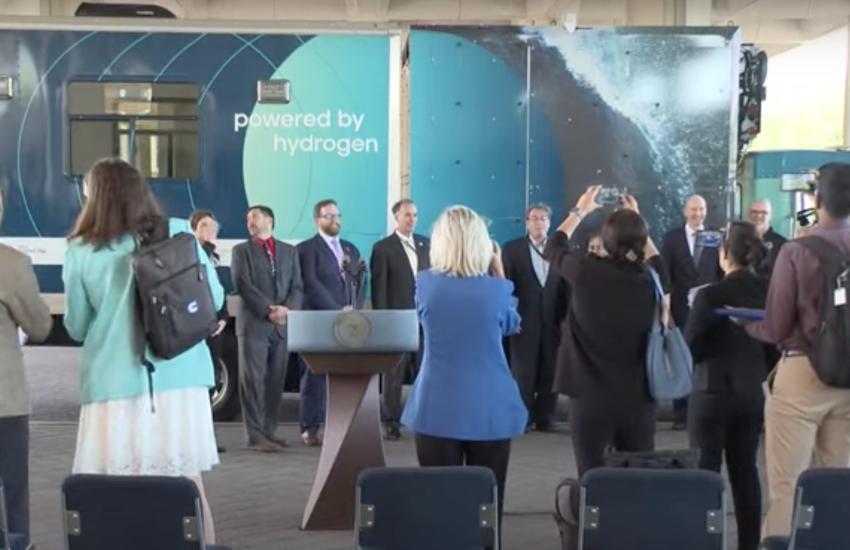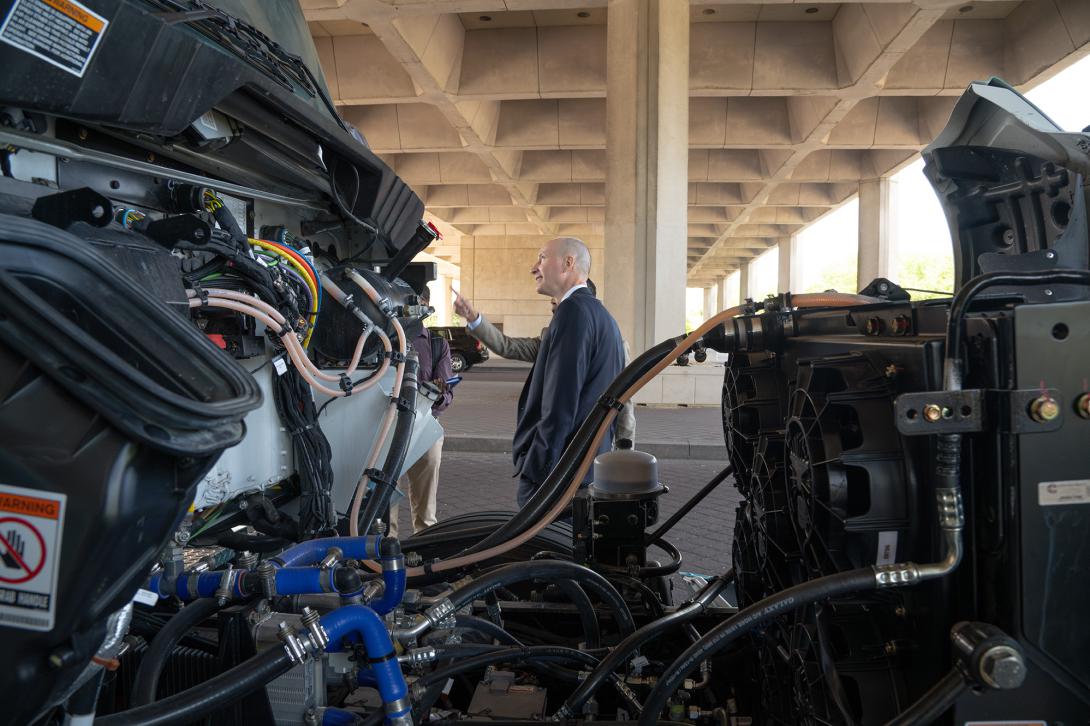2050: The Future Is Hydrogen
Upon announcing the first-ever U.S. hydrogen strategy, the Department of Homeland Security Science and Technology Directorate (DHS S&T) introduced H2@Rescue, a hydrogen-powered vehicle and potential game changer in emergency response efforts.
The innovation is part of an ongoing effort to achieve net-zero emissions by 2050.
The Infrastructure Investment and Jobs Act, also known as the bipartisan infrastructure law, was passed by Congress and signed into law by President Biden in November 2021. The legislation approved $62 billion for the Department of Energy (DOE), with $9.5 billion specifically allocated toward clean hydrogen. President Biden’s Inflation Reduction Act, signed into law in August 2022, provides a production tax credit for hydrogen.
“[H2@Rescue] is a three-year effort in the making; this is a mark of our technological and our interagency and public and private partnership progress,” said DOE Deputy SecretaryDavid M. Turk.
Turk credited the project to the U.S. Army Ground Vehicle Systems Center, the U.S. Army Corps of Engineers, the Federal Emergency Management Agency, DHS and the DOE hydrogen and fuel cells technology and vehicle technology offices. “All meeting day after day, week after week, month after month, to bring this across the finish line.”
“This truck will be a lifeline to communities desperately in need of one,” Turk continued. According to the official, the vehicle can supply enough electricity to power an emergency shelter for three days. “Above all, it’s designed to meet the needs of communities that have been hit the hardest [by natural disasters] … and all the associated weather from climate change.”
Assistant Secretary of the Army for Installations Energy and Environment Rachel Jacobson echoed Turk’s statement by recognizing the increasing frequency of natural disasters. “This is increasing the demand for responsive measures and we’re all subject to this,” she added.
Disaster recovery is one of the National Guard’s fundamental missions, Jacobson stated. “Not to mention that for the Army, disasters mean that we lose power on installations—we can’t train, we can’t work, it means our families are displaced—so we also feel it very acutely.” A power vehicle that can provide electric power, heat and water, in addition to other necessary services, is vital and a cause for celebration, she added.
Jacobson listed further promising H2@Rescue features:
- 1,500 miles of range on a single fueling;
- Enough energy output to power 15 homes for 72 hours;
- and the ability to generate more than 400 gallons of water.
“We’re already actively transforming our installations and our services as much as we can to carbon-free,” she continued. “We're pushing to have all of our nontactical vehicle fleet to electric vehicles by 2027,” Jacobson stated, adding that the branch is also generating carbon-free energy on as many installations as possible, and installing microgrids with battery storage for power outage situations.
Jacobson spoke on additional hydrogen initiatives currently taking place. “Joint Base Lewis-McChord has offered to explore ways to use hydrogen for energy generation,” she began. Fort Moore, home of the Army Rangers, is envisioning an entirely carbon-free installation, “and they too are going to offer to be a testbed for hydrogen technology to play a key role in our [carbon-free] energy solutions.”
According to the DOE Hydrogen Strategy, the launch of Hydrogen Energy Earthshot (Hydrogen Shot) in June 2021 is helping reduce the cost of clean hydrogen by 80 percent to $1 per 1 kilogram in 1 decade (“1 1 1”). Consequently, electrolysis will enable the cost of clean hydrogen to drop to $2/kg by 2026.

The strategy also states that the U.S. has around 1,600 miles of dedicated hydrogen pipelines, and “three geological caverns, including the world’s largest, which can store 350 gigawatt-hours of thermal energy or enough to power 1.2 million households a week.”
Currently, the nation uses hydrogen power for over 50,000 fuel cell forklifts; under 50 open retail hydrogen fueling stations; over 80 fuel cell buses; over 15,000 fuel cell vehicles; and more than 500 megawatts of fuel cells for stationary and backup power.
A September International Energy Agency report mentioned the growth of government to have adopted hydrogen strategies—the United States is the latest.
Additionally, the Institute for International and European Affairs has reviewed projections that indicate clean hydrogen taking 25 percent of the world’s energy demand by mid-century.
In May, the leaders of the Group of Seven (G7), which includes President Biden, met in Hiroshima for the group's annual summit. The communiqué stated, “In the exceptional circumstance of accelerating the phase out of our dependency on Russian energy, publicly supported investment in the gas sector can be appropriate as a temporary response, subject to clearly defined national circumstances, if implemented in a manner consistent with our climate objectives without creating lock-in effects, for example by ensuring that projects are integrated into national strategies for the development of low-carbon and renewable hydrogen.”





Comments